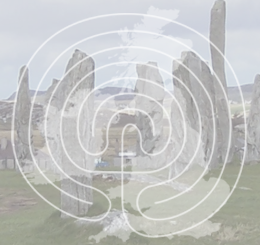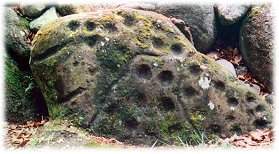Cleaven Dyke
Cleaven Dyke was thought to be a Roman defensive structure until excavation revealed that it was in fact a Neolithic Cursus (a ceremonial earthwork), which must have been one of the largest – and most labour intensive – monuments in Scotland at the time of its completion.
The dyke runs for one and a half miles through an area that is now planted by coniferous forestry, and is around two metres high and ten metres wide in the best-preserved sections. The dyke also incorporates a central mound.
![Rob Burke [CC BY-SA 2.0 (https://creativecommons.org/licenses/by-sa/2.0)]](http://www.mysteriousbritain.co.uk/wp/wp-content/uploads/2008/09/Cleaven_Dyke-1-300x225.jpg) The purpose of cursuses is open to debate, but they can be seen as ritual monuments – perhaps processional route ways – with deep significance to their builders.
The purpose of cursuses is open to debate, but they can be seen as ritual monuments – perhaps processional route ways – with deep significance to their builders.
There have been several outlandish theories put forward over the years – one antiquarian thought that they were race courses, and during the UFO fervour in the 50’s and 60’s it was proposed that they were landing strips for alien craft, which is to denude the achievements of our ancestors.
Cursuses are more associated with Southern England than with Scotland on the whole, but it now seems that may have been more widely dispersed than was thought before. Cleaven Dyke dates back to at least 3500BC, these structures must have been a huge undertaking and may date through several generations, the tradition continuing over the years. This does say something for the strength of the beliefs held by these early farmers.
Directions: The dyke cuts across the A93 between Perth and Blairgowrie.




Recent Comments